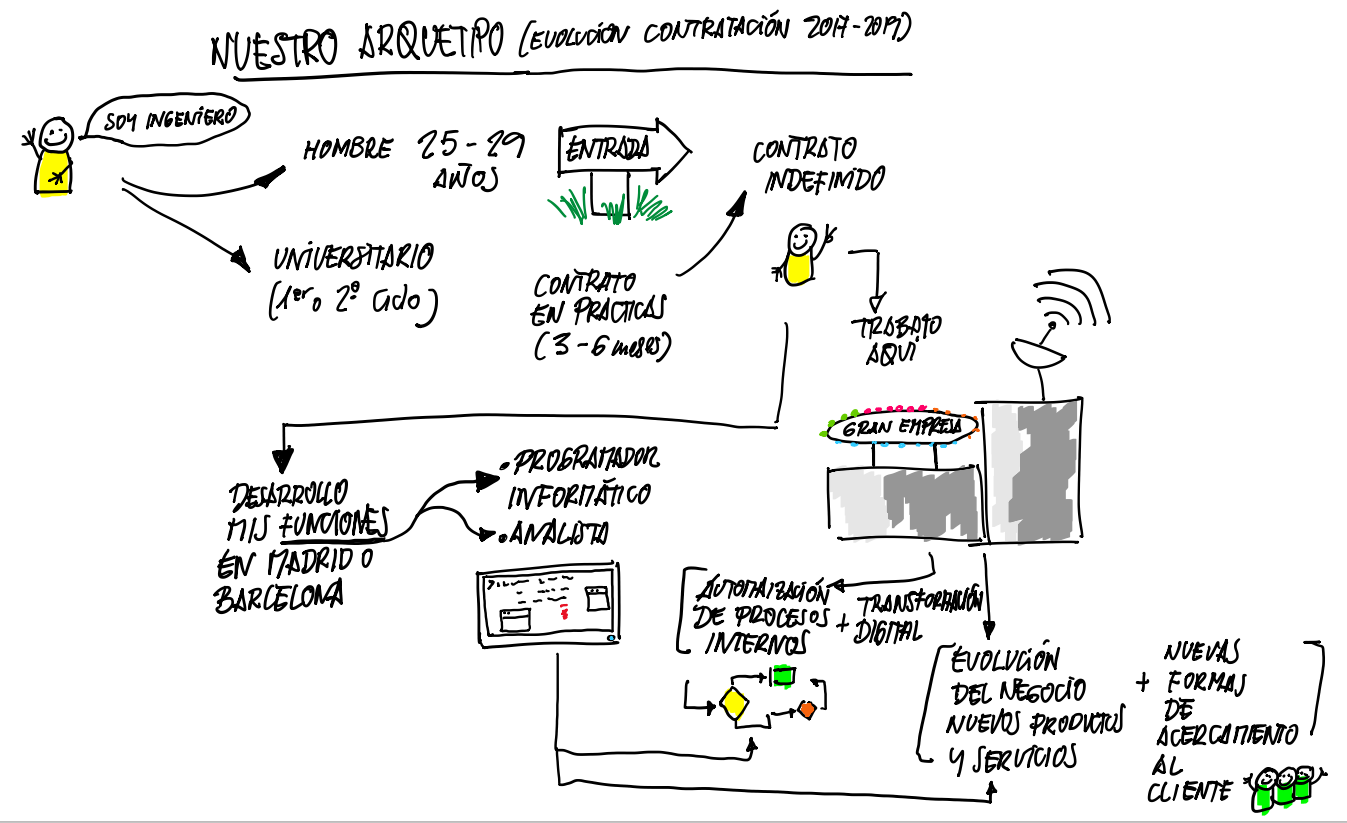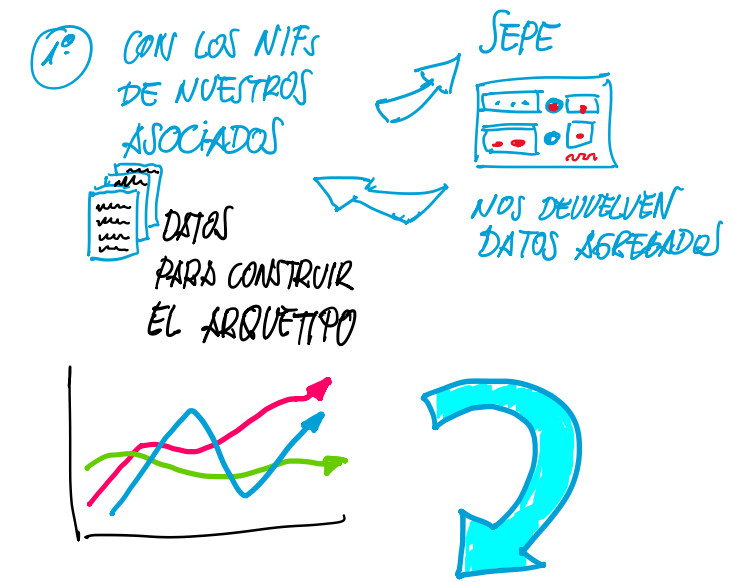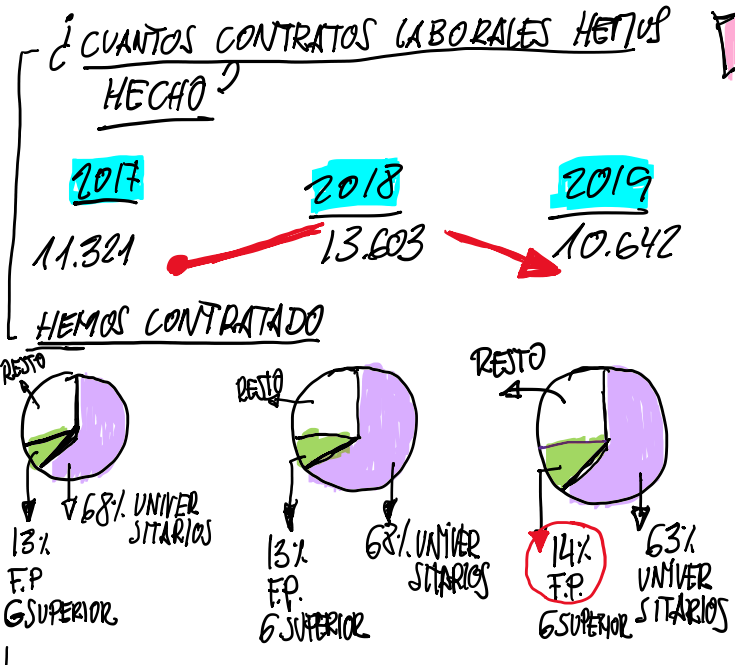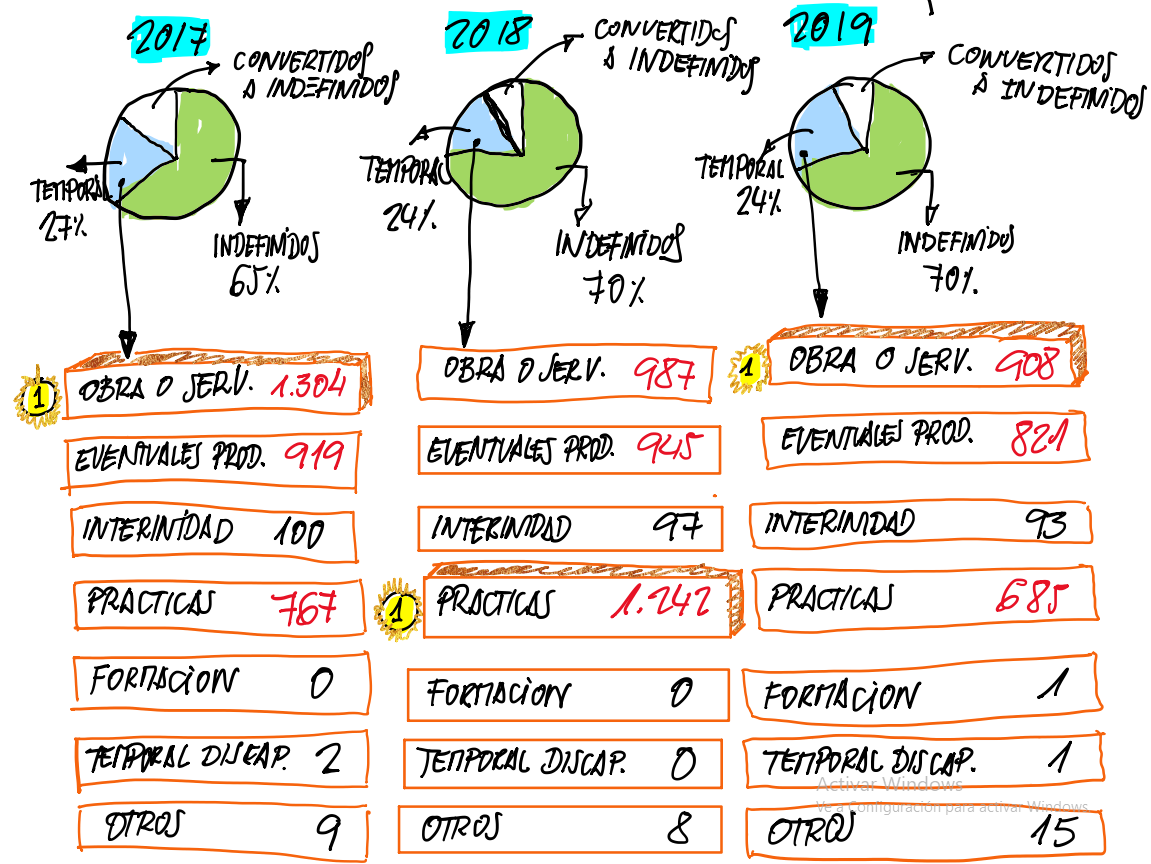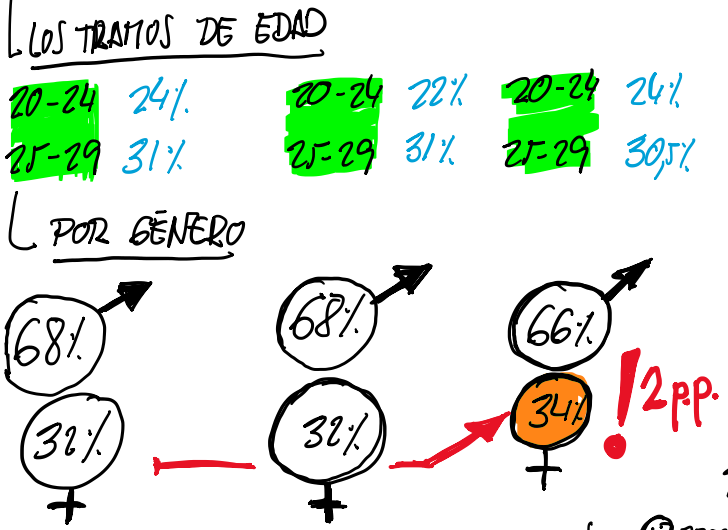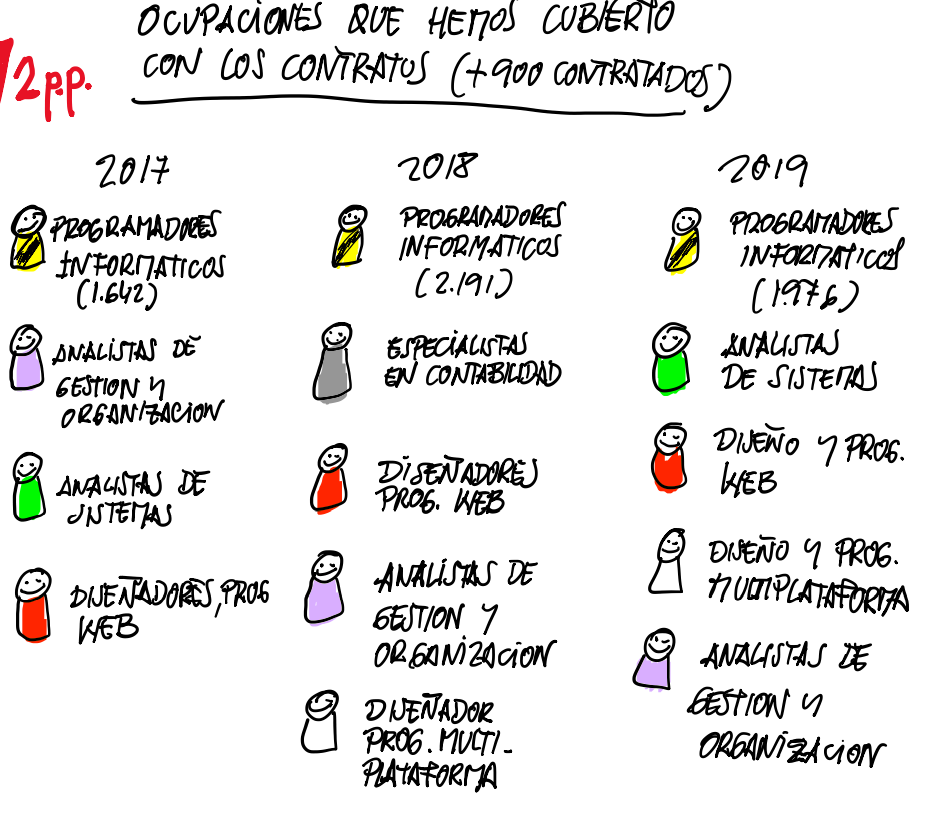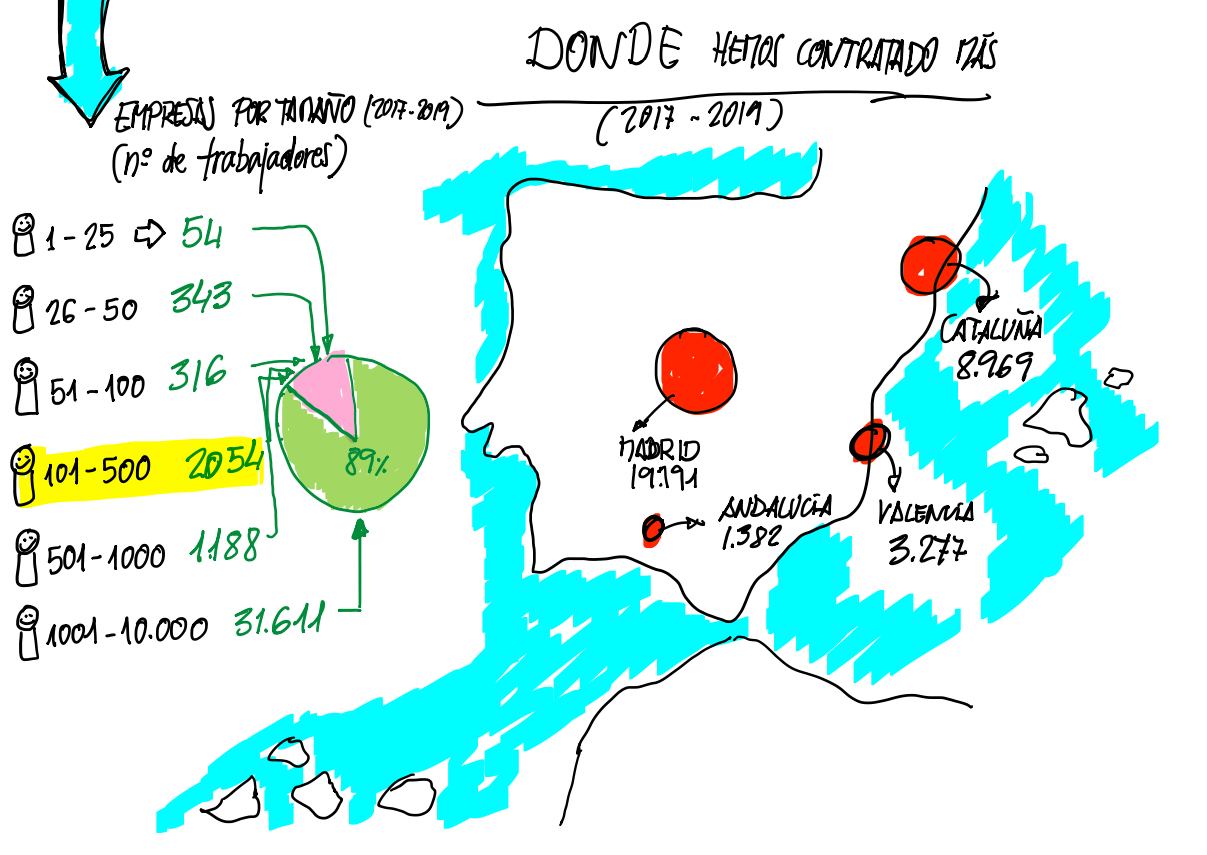17/11/2020
- Engineer, male, between 25 and 29 years old, working in a large company in Madrid or Barcelona.
Every year at least 10,000 technical positions go unfilled in Spain due to a lack of qualified candidates. Supply continues to increase, but large telco companies are having trouble recruiting talent. Web and Big Data developers, software engineers, full-stack programmers and system architects are in demand. Experts in cybersecurity, business intelligence and data processing, as well as expertise in robotics, the Internet of Things and virtual and augmented reality.
But… what kind of contracts are companies making? Who are you adding to your staffs? With which profiles?
In DigitalES we have crossed the data of our 57 partners with those of the State Public Employment Service (SEPE) to build through aggregated data, the prototype of the professional hired by the leading companies in the Digital Economy and Industry sector.
The 57 companies that make up DigitalES generate 3.3% of the national GVA, have a turnover of 47,000 million euros and invest 2,000 million euros in R&D. Together, they employ 250,000 people. Now, how many new workers join each year?
The figure varies from year to year. In 2,017, 11,321 people joined these companies, a figure that rose to 13,603 in 2018, to stand at 10,642 during the past fiscal year.
Most of them, around 68%, are university graduates, but the incorporation of more and more profiles coming from Vocational Training stands out. This is an upward trend that has already risen one point in the past year to 14%.
In the opinion of Javier Miranda, consultant at DigitalES, the fact that many students have the opportunity to spend the second or third years of their higher degrees in companies is of great importance for the technological world. “Dual VET is based on a high number of internships, that model of linking company and institute in which students not only leave prepared with the theoretical but also with the practical field,” he adds.
In the opinion of Javier Miranda, consultant at DigitalES, the fact that many students have the opportunity to spend the second or third years of their higher degrees in companies is of great importance for the technological world. pic.twitter.com/RQydtkA2wF
– DigitalES_ (@AsocDigitales) November 17, 2020
Most of the contracts signed are permanent, 70% in the last two years. Among temporary contracts, those for work and services are the most common, followed by temporary contracts and internships. The latter had a special upturn in 2018, when they became the most used formula among temporary contracts.
The average age of new workers is between 25 and 29 years old, although there is also a presence among those under 24. The proportion has remained stable over the last few years, with hardly any variations, but there has been a change in the distribution by gender, with an increase of two percentage points in the presence of women. Although the male presence continues to be overwhelming (66% of men to 34% of women), there is already a change in the gender distribution.
For Javier Miranda, consultant at Digitales, “technology does not understand gender”. “Talent is everywhere. Women cannot be ahead or behind, they must be at the same level. What can women contribute? With that capacity to generate teamwork, active listening, those skills that perhaps they have more developed, but men and women should have the same possibilities in a system that does not measure them by their gender, but by their performance and their work capacity,” she concludes.
"¿Con qué puede contribuir la mujer? Con capacidad de generar equipo, escucha activa, habilidades que quizás tenga más desarrolladas, pero todos deben tener las mismas posibilidades en un sistema que nos los mida por su género, sino por su desempeño y su capacidad de trabajo” pic.twitter.com/fHHxsOH7uK
— DigitalES_ (@AsocDigitales) November 17, 2020
In terms of the occupations covered, one of them has stood out above the rest in recent years: computer programmer, management and organizational analysts, accounting specialists, systems analysts, and web designers and programmers are also in demand.
Eighty-nine percent of the contracts are made by companies with more than 1,000 employees, which is logical if we analyze data from DigitalES, where most of the partners are large companies such as Telefónica, Vodafone, Orange, Cellnex, IBM or HP. There are no major surprises in the geographic distribution either. The most densely populated areas account for most of the new hires. Madrid ( 19,991), Catalonia (8,969), Valencia (3,277) and Andalusia (1,382) lead this ranking.
With all these data, we can sketch the portrait of the average professional hired by companies in the technology sector in recent years: male engineer, between 25 and 29 years old, working in a large company and developing their functions in Madrid or Barcelona.
There is also another way for university students to enter, which is with an internship contract during their studies, which often leads to a permanent contract.
The main occupations, in both cases, are programmer or analyst and their objective is to automate internal processes and drive digital transformation to evolve the business and provide companies with new ways of approaching the customer.


